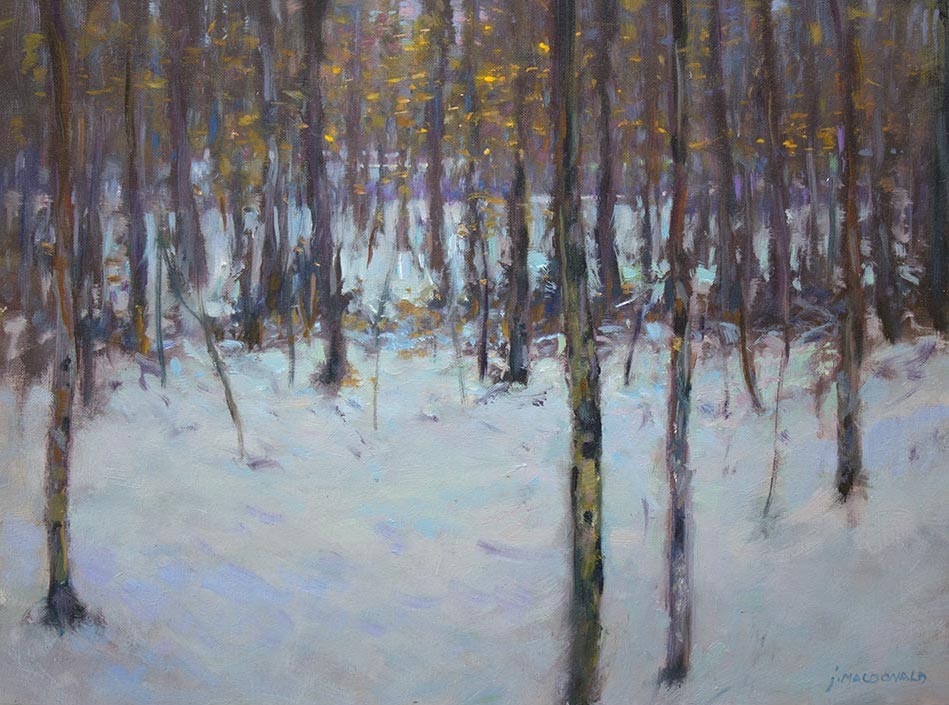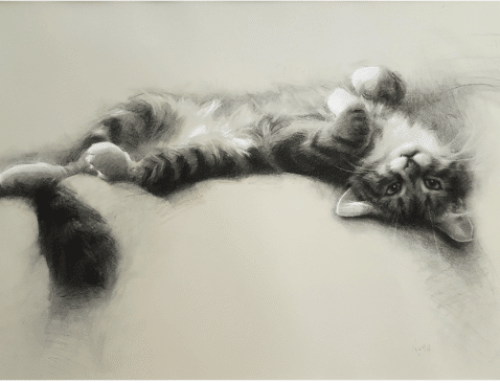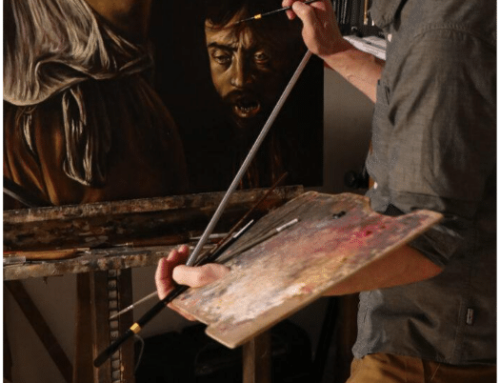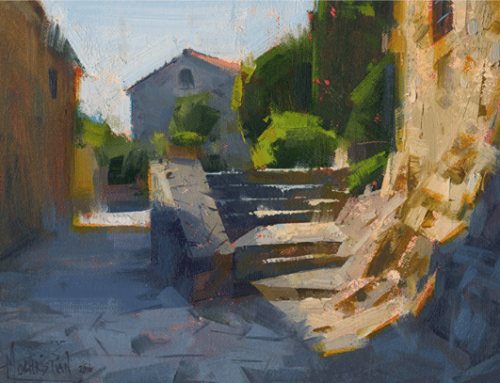A growing trend in plein-air painting today is the embrace of Tonalism, a movement in American landscape painting between that ran its course roughly between 1880 and 1920. Touched off by the late work of George Inness and the arrival in America of the earlier French Barbizon School, the Tonalists limited their colors so as to emphasize gradations of value between dark and light. The word “tone” comes from music, and fittingly suggests the poetic and lyrical quality of the approach.
Plein air painters may well want to borrow a page or two from the Tonalist playbook: minimizing accurate detail and removing the “distraction” of trying to match color makes it easier for some to discover lyricism and feeling in their on-location landscape work. One contemporary artist painting (and teaching) along these lines is John MacDonald.
Historical painter Dwight Tryon (1849-1925), a dedicated Tonalist of the fields, sea, and shore, embraced the style for its ability to suggest more than it says, to evoke “mystery, infinity. A painter who feels these truths in nature is humble. He frankly acknowledges there is something that cannot be painted. But this draws him on, and the highest and most lasting things are these suggestions. In this striving for the spiritual, the higher the whole, so insensibly but surely parts come to belong to the whole.”
Mood & Mystery
The 2010 survey of this movement now in its third edition, A History of American Tonalism by David Allen Cleveland, dubs the movement a “crucible of modernism” and describes the painters who were part of it as, “a generation of artists using tone as a distinct means of expression in its own right. Having jettisoned narrative content, tone became a new language, a signifier of mood, of mystery and uncertainty, and stood for the searching spirit of the age.”
That’s the best definition of Tonalism I’ve ever encountered, and that sense of uncertainty and “the searching spirit of the age” could apply today, which, I think, goes some way toward explaining why Tonalism is popular again.




